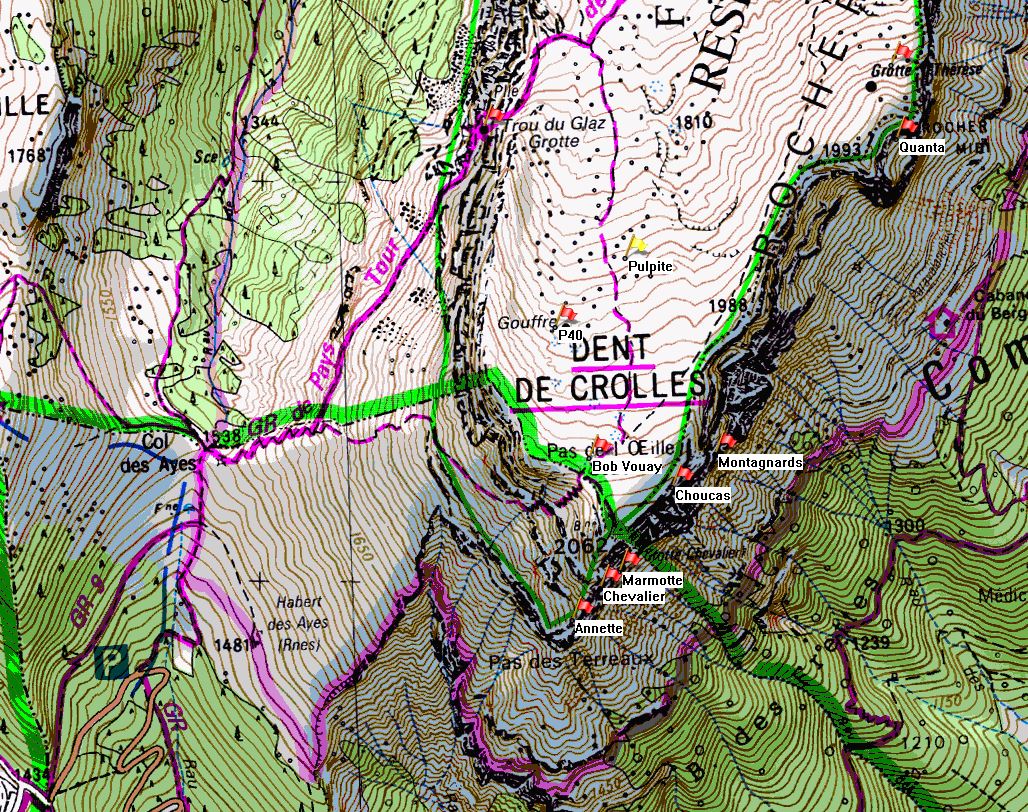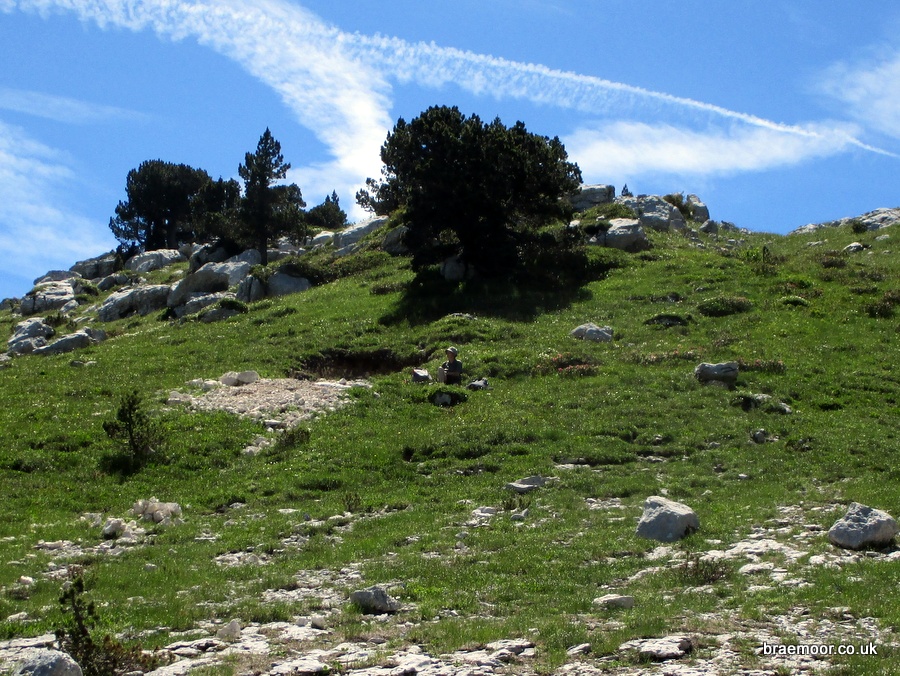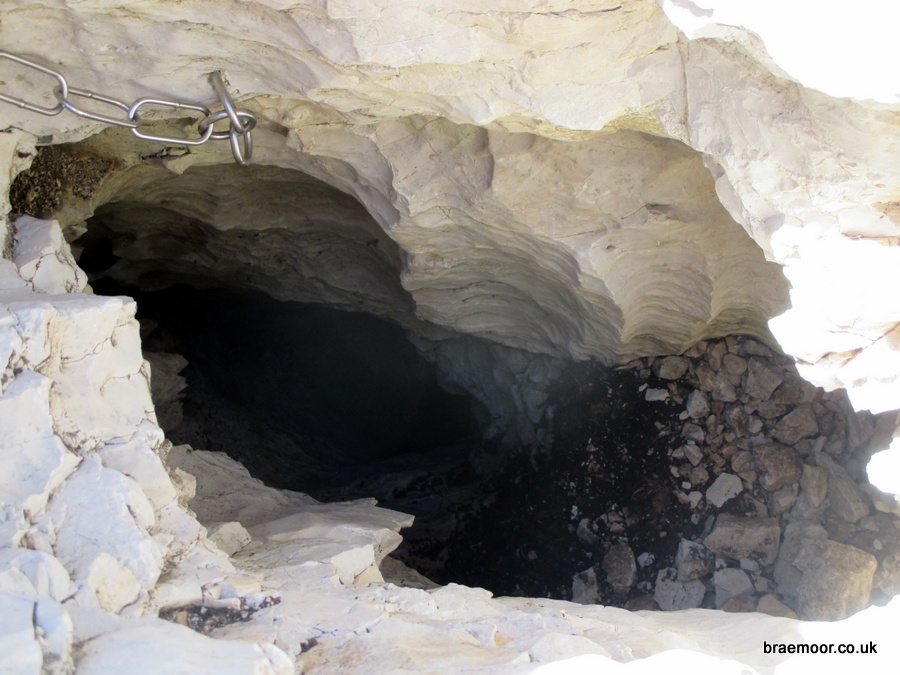Gouffre de la Pulpite Irréversible
Northing: 45.314053° Easting: 5.855845° Altitude: 1,900 m
How to find it
Follow the waymarked GR9 from the Col du Coq past the Trou du Glaz onto the plateau above. At the signposted junction follow the path up towards the summit. After about 350 metres there is an obvious spoil heap 40 metres on the left, which marks the location. Note that one source on the web give the altitude as 1,790 metres - this is incorrect.




Further information
Having been identified as a potential entrance from below, Gouffre de la Pulpite Irréversible was dug open in 2010. It has now been equipped with pull-through chains and traverse ropes, and the through trip to Trou du Glaz is actualy used for commercial caving. It is not a long traverse, but is flood prone so should be avoided in wet weather and snow melt. The narrow entrance shaft is short and broken into three sections, and drops into about 100 m of meander, 20 m of which has been blasted and is restricted (the Tortue Ninja). This passage enters the impressive Salle du Dôme des Écrins from which a succession of short pitches lead to the main feature, a 145 metre shaft (Puits du Lac) dropped in three stages - 85 m, 20 m, and 40 m. This lands in the main passage in Trou du Glaz below the Lantern shafts. From here, it is possible to exit through Trou du Glaz (4 to 5 hours) by ascending the permanently rigged Puits de l'Ogive into the Trou du Glaz upper story, or join one of the standard through trips from Trou du Glaz.
The best account of the route available on the web is a route guide by Charlie Rivoire of Emergence-spéléo, written in the same style as those of the Spéléo Secours Isère. It has been loosely translated by the author (use at your own risk).
A survey of the passages between Puits du Lac and the bottom of the entrance shafts, with a cross section, is available in the original exploration report by Olivier Dutel in Scialet 38, downloadable from here.
It is worth noting that that there is a complex of passages above the Puits du Lac shafts, with at least one connection to the Grotte du Guiers Mort. These passages, and the story of the connection to the surface, are described in an article by Olivier Dutel in Scialet 39 (2010), available on bona fide request. A cross section of the upper passages is also available.
The name refers to pulpitis, a dental condition which can result in necrosis creating cavities to the very heart of the tooth…

